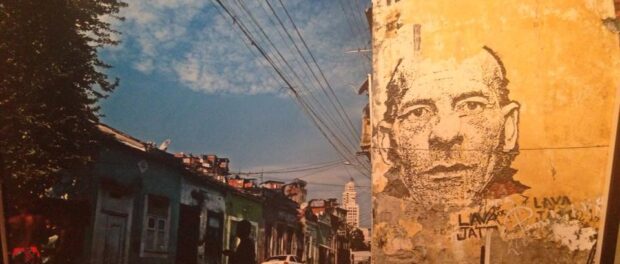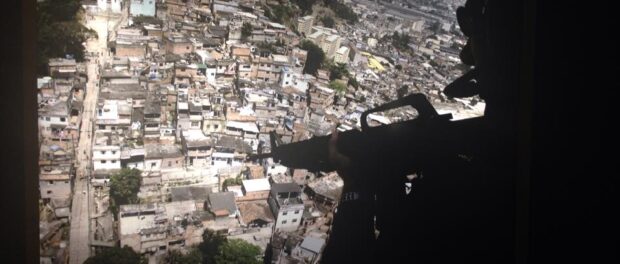
The Rio Museum of de Art’s (MAR) primary ongoing exhibition of 2014 From Valongo to Favela: The Imaginary and the Periphery opened its doors last May to showcase the history of Rio de Janeiro’s Port area. The exhibit will end May 15.
Curator Rafael Cardoso explains the exhibition in a video on MAR’s YouTube channel: “From Valongo to Favela: The Imaginary and the Periphery is a large exhibition touching on the concept of ‘periphery’ because of the fact that the MAR is located in an area of Rio de Janeiro considered the first periphery of Brazil.”
Curators Cardoso and Clarissa Diniz selected about 200 pieces of art including historic objects, iconography and contemporary works to be displayed in the exhibition. Several Brazilian artists such as Ayrson Heráclito, Carlos Vergara and Lucia Rosa collaborated with the museum on this project.
The exhibit is set up chronologically in two large halls—one chronicling the slave-trade era and one showing current life in Rio’s favelas. By connecting the period of the slave trade prior to 1888 with the settlement of the first favela in the same area just ten years later, in 1898, this exhibition has made an obvious historical connection that many have been conditioned not to see: Brazil’s deep slave past and the existence of its favelas are inextricably linked. Furthermore, the view and treatment of slaves has in many ways carried over to residents of the favelas. In many ways, they are one and the same.
The two halls are juxtaposed, one with black walls and the other with white walls, respectively. Though most works are static, there are some interactive video/audio pieces for the public to engage with.
The exhibit in the first room is displayed in an open space without walls separating each work. Instead of exploring different spaces, visitors circulate around the walls in the dim light, learning about and reflecting on the country’s slave-holding past. Brazil ultimately received 4 million enslaved Africans, the most of any nation and ten times that of the US. An old boat and a circle of photographs set on the floor are displayed in the middle of the room.
The second room is well-lit and visitors navigate it by zigzagging around its white walls, with no centerpiece. This second room shifts away from the dim images of the region’s Valongo slave wharf towards the more recent 117-year history of the city’s favelas, also born in the region: an increasingly vibrant and in some ways optimistic exhibition.
The History
The neighborhoods of Saúde and Gamboa in the Port near downtown Rio de Janeiro make up an area that is considered by many the first periphery of Brazil. In the 18th century, this space not only served as the arrival site of gold and diamonds from Minas Gerais state, but also of between 500,000 and two million Africans to be traded as slaves in the famous Valongo wharf and street slave market. The Valongo wharf alone received more than the estimated total number of Africans brought to the United States over the entire course of the US slave trade (450,000).
By the end of the 19th century, Morro da Providência, also in the Port area, was settled as the first favela, and the favela-port region, known as “Little Africa.” These two locations soon acquired a feared reputation of violence and immorality. “[B]etween prejudice and resistance to the difficult social reality” the most well-known Brazilian music genre was born there at this time: samba.
The MAR
According to exhibit curators Cardoso and Diniz, the exhibition examines with art the “cultural imaginary” of how this peripheral area was formed. It shows historic documents and images of the place from the valongo era to the birth of the favela “as an issue of interest to art far beyond the geographical limits of its origins.”
The museum also offered a free course to the public in the Fall about the history of Rio. The course aims to discuss the exhibit and “offer a diverse panorama of contemporary thoughts on the history of Rio de Janeiro.”
With this exhibition, the MAR, which recently celebrated its one-year anniversary, is mixing art with history, while also recognizing and prioritizing the cultural significance of its location. “Visibility is necessary,” the curators write, “[so] that respect (…) is also given to those who have always been excluded and consigned to the margins.”

